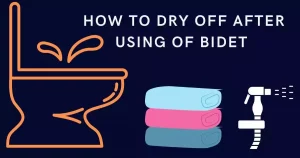Bidet Water Too Cold? Upgrade Your Wash for Warmth!

Are you tired of bracing yourself for an icy blast of bidet water every time you visit the bathroom? see my article the right temperature of bidet’s water.
You’re not alone. Many bidet users struggle with uncomfortably cold water, especially during colder months. But fear not! In this article I will dive in detail the reasons behind this chilly issue and provide you with some simple solutions to help you fix it.
Say Goodbye to Cold Bidet Water: Learn How to Keep It Cozy
Read also:
how to make bidet water warm
Ah, the bliss of warm bidet water! If you’re tired of the bidet water being too cold and the pressure too low, fear not. There are several solutions available to ensure a pleasant and warm bidet experience.
First, check if your bidet has a built-in water heater. These bidets have temperature control options, allowing you to adjust the water to your desired warmth. Look for a temperature control knob or button on your bidet panel and turn it up to enjoy a soothing warm stream.
However, if your bidet doesn’t have a built-in heater, you can consider installing a bidet with a water heater or a warm water bidet attachment that connects to your hot water supply.
These attachments often have adjustable settings to find your ideal water temperature. Remember, if you opt for a bidet attachment, you may need a hot water line nearby. Consult the installation instructions or seek professional help if necessary. With these options, you can bid farewell to chilly surprises and welcome the comforting warmth of bidet water warmer.
With these bidet water warmer solutions, you can now address the common issue of bidet water being too cold.
Bidet Water Too cold – Problems with complete Solutions
Hot Water Supply is Unavailable (non-electric bidet)
Problem:
Non-electric bidets are designed to be connected to the hot water supply in your home. If the hot water supply is not available, the water coming from the bidet will be cold.
Solution:
One potential solution to this problem is to install a separate hot water supply line for your bidet. Alternatively, consider installing an electric bidet, designed to heat the water on its own, regardless of the hot water supply in your home.
Water supply temperature:
Problem:
The temperature of the water supply in your home can affect the temperature of the bidet water.
Solution:
If you find that the bidet water is too cold, the first step is to check the temperature of the water supply. It’s essential to ensure that the water heater is set to the appropriate temperature, typically around 120°F (49°C) for most homes.
If the water heater temperature is already set correctly, you may need to increase the temperature of the water supply. You can do it by adjusting the thermostat on your water heater or contacting a professional plumber to make any necessary adjustments.
Weather conditions:
Problem:
Extreme weather conditions, such as cold temperatures, can cause the water in the pipes to become colder than usual. This can affect the temperature of the bidet water.
Solution:
To prevent the bidet water from being too cold due to extreme weather conditions, insulate your pipes properly to avoid heat loss.
You can do it by wrapping your pipes with insulation, which is available at most hardware stores. Another solution is to install a hot water recirculation system, which circulates hot water through your pipes to keep them warm. This can be especially helpful in areas with cold climates or during the winter months.
Plumbing issues:
Problem:
Leaks or other plumbing issues in your home can cause the water to be colder than it should be.
Solution:
To solve this problem, inspect your pipes regularly for leaks and repair them promptly.
You can also insulate your pipes to prevent heat loss. Suppose you suspect that there is a problem with your plumbing system.
In that case, it’s best to contact a professional plumber to diagnose and repair the issue. They can also advise you on any upgrades or improvements to your plumbing system to ensure it operates efficiently and reliably.
Distance from water heater:
Problem:
If your bidet is located far from your hot water source, the water may cool down by the time it reaches the bidet, resulting in colder water.
Solution:
In case if your using a non-electric bidet and using hot water from a source far from the bidet.
One solution to this problem is to install a insulated water line for the bidet closer to the hot water source. This will ensure that the water reaches the bidet at a hotter temperature.
Another solution is to install a hot water recirculation system, which circulates hot water through your pipes to keep them warm. This can be especially helpful if you have a large home or your bidet is far from the water heater.
Low water pressure:
Problem:
Low water pressure can cause the bidet (non-electric) water to be colder than usual. This is because low water pressure reduces the flow rate of hot water to the bidet, making the water cooler.
Solution:
To solve this problem, (if your using a non-electric bidet) check the water pressure in your home. If the water pressure is too low, you may need to install a pressure booster or pressure regulator to increase the flow rate of hot water to the bidet.
Another solution is to install a more extensive water supply line for the bidet, which will increase the flow rate of hot water and prevent it from cooling down before it reaches the bidet.
Aging water heater:
Problem:
An aging water heater can cause the water to be colder than it should be. Over time, sediment can build up in the water heater, reducing its efficiency and ability to heat water.
Solution:
If you suspect that your water heater is aging, it’s important to have it inspected by a professional plumber. They can assess the water heater’s condition and advise you on whether it needs to be replaced.
Additionally, consider upgrading to a more energy-efficient water heater, which will provide hotter water and save you money on your energy bills.
Temperature control setting:
Problem:
If the temperature control setting on your bidet needs to be adjusted correctly, the water may be too cold.
Solution:
The solution to this problem is to adjust the temperature control setting on your bidet. Most bidets have a temperature control knob or button that allows you to adjust the temperature of the water.
Make sure that the temperature setting is set to your desired temperature. If you need help with how to adjust the temperature control setting, refer to the user manual for your bidet.
Incorrect installation:
Problem:
If your bidet was not installed correctly, it could lead to issues with the hot water supply, resulting in colder water.
Solution:
To solve this problem, you may need to have your bidet reinstalled or adjusted by a professional plumber.
Improper installation can cause a number of issues, including low water pressure and incorrect temperature control settings, so it’s essential to ensure that your bidet is installed correctly and according to instruction give with the product.
Malfunctioning bidet:
Problem:
If your bidet is malfunctioning, it may not be able to provide hot water, resulting in colder water.
Solution:
The solution to this problem depends on the specific issue with your bidet. If your bidet is still under warranty, you can have it repaired or replaced free of charge.
If you still need to, you may need bidet technician inspect the unit and identify any issues. Common issues that can cause problems with hot water supply include damaged water lines, faulty temperature sensors, and malfunctioning heating elements.
User preference:
Problem:
Some users prefer colder water when using a bidet, while others prefer hotter water.
Solution:
If user preference is the issue, the solution is relatively simple: adjust the temperature control setting on your bidet to your desired temperature.
If you prefer colder water, adjust the setting accordingly. If you prefer hotter water, change the setting to a higher temperature. It’s essential to keep in mind that bidet water should never be scalding hot, as this can cause burns and other injuries.
Cultural differences:
Problem:
In some cultures, bidets are traditionally used with cold water only, so users may not expect or desire hot water.
Solution:
If cultural differences are the issue, the solution may be a matter of education and awareness. If you are not accustomed to using hot water with your bidet, gradually adjust the temperature control setting to see if you prefer warmer water.
Suppose you prefer colder water for cultural reasons. In that case, it’s important to remember that bidet water should still be clean and free of harmful bacteria. Be sure to use an appropriate cleaning solution and follow proper hygiene practices.
Health conditions:
Problem:
Some users may have health conditions requiring them to avoid hot water exposure, such as certain skin conditions or allergies.
Solution:
If health conditions are the issue, it’s important to consult with a healthcare professional to determine the best course of action.
Sometimes, cold water may be recommended or even required to avoid exacerbating certain conditions. Discuss your options with your doctor or another qualified healthcare provider if you have concerns about using hot water with your bidet due to a health condition.
Power outage:
Problem:
If your home experiences a power outage, your bidet may not be able to heat the water properly.
Solution:
If a power outage is an issue, there may be little you can do at the moment to address the problem. However, it’s a good idea to have backup plans in place for situations like these.
Consider keeping a supply of bottled water or another water source on hand that you can use to flush your bidet in case of an outage manually. Additionally, consider investing in other backup power sources to ensure your bidet and other essential appliances can continue functioning during an outage.
Maintenance issues:
Problem:
If your bidet needs to be properly maintained or cleaned, it may not be functioning properly, which can affect the temperature of the water.
Solution:
If maintenance issues are the problem, it’s important to take steps to clean and care for your bidet properly. This can include regular cleaning with a mild, non-abrasive cleaner to prevent the buildup of debris or mineral deposits and check for any visible damage or malfunctioning parts.
If you are uncomfortable performing maintenance tasks yourself, consider consulting with a qualified professional to help you diagnose and address any issues with your bidet.
Tank-Type Water Heater
Problem:
If you have an electric bidet equipped with a tank-type water heater, you may experience issues with water temperature if the tank runs out of hot water.
Solution:
If you are experiencing issues with water temperature due to a tank-type water heater. Try a better option and consider upgrading to an electric bidet equipped with a continuous-flow water heater. These types of bidet heaters do not rely on a tank to store hot water and can provide a continuous hot water supply for as long as the bidet is in use.
Hybrid Heater Misleading Claims:
Problem:
Some bidets on the market claim to have a “hybrid” heating system that combines the tank and tankless heating technology, but these claims can be misleading. In reality, these systems may not be as effective at heating the water as advertised, which can result in cold water.
Solution:
To avoid this issue, research and choose a bidet with a reliable and proven heating system. Look for models that have a consistent track record of providing hot water and have positive reviews from users.
Takeaway
In conclusion, there are various factors that can affect the temperature of bidet water, such as the temperature of the water supply, extreme weather conditions, plumbing issues, the distance from the water heater, low water pressure, an ageing water heater, temperature control settings, water supply line size, sediment buildup, and incorrect installation.
To ensure that the bidet water is at a comfortable temperature, check these factors regularly and take appropriate action, such as adjusting the temperature control setting, insulating pipes, installing a hot water recirculation system, upgrading the water heater or consulting a professional plumber. By doing so, you can enjoy a comfortable and hygienic bidet experience.
FAQs- Bidet water too cold
Q: How can I make bidet water warm?
A: There are a few options to make bidet water warm. One way is to choose a bidet with a built-in water heater. These bidets come with temperature control settings, allowing you to adjust the water to your desired warmth. Alternatively, you can consider installing a warm water bidet attachment, such as those available at homeequipments.com. These attachments can be connected to your existing water supply and provide warm water for your bidet.
Q: What is a bidet water heater?
A: A bidet water heater is a component or feature in certain bidet models that heats the water before it is released for cleansing. It ensures that the water temperature is comfortable and warm, providing a more pleasant bidet experience.
Q: What should I do if my bidet water pressure is too low?
A: If you are experiencing low water pressure in your bidet, there are a few potential solutions. First, check if the water supply valve for the bidet is fully open. If it is, you may need to inspect the water pressure regulator or consult a plumber to address any underlying issues with your plumbing system that might be affecting the bidet’s water pressure.
Q: Do I need a hot water line for a bidet?
A: While some bidets require a hot water line to provide warm water, not all bidets necessitate it. Bidets with built-in water heaters can warm the water independently, eliminating the need for a dedicated hot water line. Additionally, there are warm water bidet attachments available that can be connected to the existing water supply, providing warm water without requiring a separate hot water line.
Q: Can I add a water heater to my bidet?
A: It depends on the specific bidet model. Some bidets may offer the option to install an external water heater to ensure warm water supply. However, it is recommended to consult the manufacturer’s instructions or reach out to their customer support to determine if adding a water heater is feasible and compatible with your bidet model.
Q: Where can I find bidet water warmers or bidet attachments?
A: You can find bidet water warmers, including bidet attachments that provide warm water, at various online retailers and home improvement stores. One popular online platform to explore is homeequipments.com, which offers a range of bidet products and accessories.





